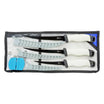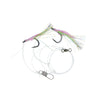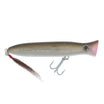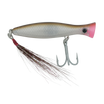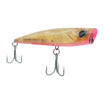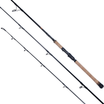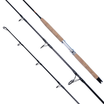First, let’s decompose (one) hook vs (two) hooks in performance terms:
One Hook Pros:
- Efficiency: Easier and faster to release fish, thereby increasing lure time in the water.
- Improved Action: When rigged properly, or designed for one hook, many lures perform better with a single hook with less hardware to encumber the action of the lure.
- Reduce Weed Snags: Switching to one hook significantly reduces opportunity to pick up fish spooking weeds.
- Reduced Fish Injury: Switching to (1) hook significantly reduces the chance of harming fish with dangerous “secondary” hooking in gills, throat or eyes.
- Reduced Angler Injury: One hook results in significantly lower change of angler hooking. The vast majority of angler “hookings” are a result of the second hook
One Hook Cons:
- Landing Ratio: In some cases, you landing ratio will be reduced by as much as 10%, particularly on small fish hitting big lures.
- Action: If a lure is not rigged or balanced properly for (1) hook, it may not swim as well.
Two Hook Pros:
- Increased Hook Coverage: Better for ensuring hook-ups, especially with smaller, more aggressive fish on big lures.
Two Hook Cons:
- Increased Handling Time: Removing (2) hooks more than doubles hook removal time, on average.
- Increased Weed Pick Up: More hooks results in more weed snags.
- Increased Fish Injury: Mortality rate is as high as 15% over the course of the season with lures rigged with two hooks.
- Increased Angler Injury: (2) Hooks results in significantly higher change of angler hooking. The vast majority of angler "hookings" are a result of the second hook




















